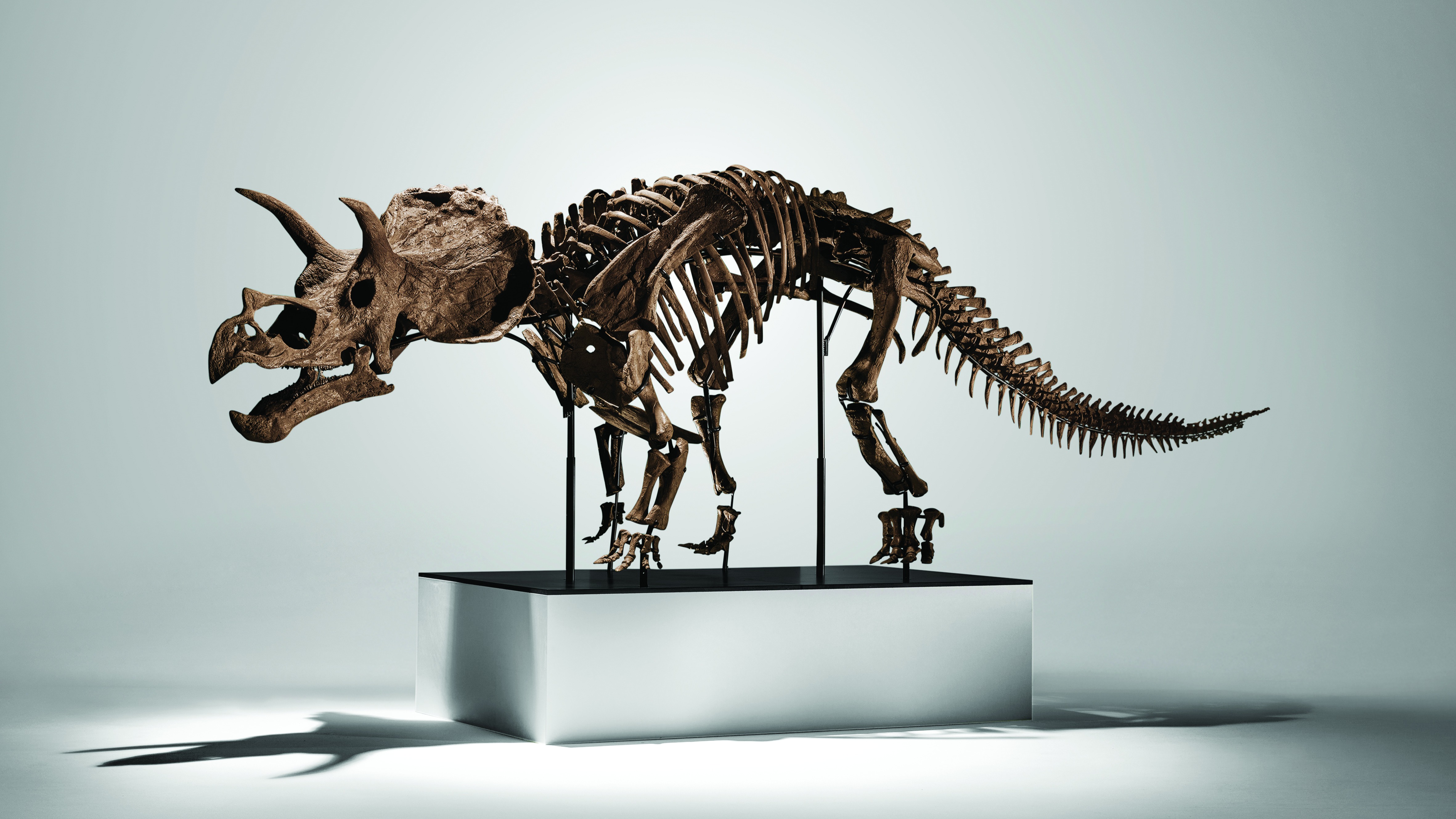The £2m lump of rock up for auction
This $2m lump of moon rock is astronomical in more than one sense of the word. Chris Carter reports


Christie’s is “no stranger to astronomical sums of money”, says David Sanderson in The Times. “Astronomical items are rarer, however.” The auction house in London has put up for sale the fifth-largest chunk of the Moon that can be found on Earth. Hundreds, if not thousands, of years ago, an asteroid or comet smashed into the moon, spraying lunar regolith into space. Then, at some unknown point in time, NWA 12691, as this specimen is called, rained down over the western Sahara as part of a large meteorite shower. It was later found by a researcher working in the desert two years ago.
The shower is thought to be responsible for at least 30 of the known lunar meteorites – a high proportion when you consider that Moon rock is one of the rarest substances on Earth. If you were to gather together the approximately 400kg that Apollo astronauts brought back from their jaunts to the Moon in the 1960s and 1970s, and all of the additional 650kg of known lunar meteorites that have fallen to Earth naturally, “they would all fit comfortably inside a very small car”, says James Hyslop, head of science and natural history at Christie’s.
Moon rocks are identified by their textural, mineralogical, chemical and isotopic signatures. They can contain minerals that are rare or not even present on our planet. It’s little wonder, then that, as of last week, President Donald Trump’s administration was drawing up a legal blueprint to mine the Moon, called the Artemis Accords, according to Reuters. It’s not as crazy as it sounds, as Charles Stanley’s Garry White points out in The Daily Telegraph. “The ‘barren’ Moon is really a commodity sweet shop – with significant deposits of gold, iron, magnesium and titanium,” he writes. “Also buried below the surface are believed to be significant deposits of some of the most strategically important elements that are expected to underpin the economy of the future” – the “rare-earth metals” that are used to make everything from smartphones to medical-imaging systems. Currently, around 85% of the supply of these metals comes from China, something that is bound to grate with Trump given the state of trade relations between the two powers. And it’s not as if China isn’t also working on its own plans to start digging on the Moon.
MoneyWeek
Subscribe to MoneyWeek today and get your first six magazine issues absolutely FREE

Sign up to Money Morning
Don't miss the latest investment and personal finances news, market analysis, plus money-saving tips with our free twice-daily newsletter
Don't miss the latest investment and personal finances news, market analysis, plus money-saving tips with our free twice-daily newsletter
Bowled over
But for now, Earth has to make do with what the Moon throws at it. That makes NWA 12691 rare, and especially so for its size. Weighing around 13.5kg, it’s bigger than anything the Apollo astronauts brought back and goes some way to explaining its £2m price tag.
Christie’s is also offering 13 “aesthetic” iron meteorites for private sale. That collection is expected to fetch in the region of £1.4m. Bonhams in Los Angeles is holding an online auction of meteorites that runs until next Thursday. But it’s NWA 12691 that is perhaps most alluring. “Every time I see it in the warehouse the sheer size of it bowls me over,” says Hyslop. “Holding a piece of another world in your hands is something you never forget.”
Get the latest financial news, insights and expert analysis from our award-winning MoneyWeek team, to help you understand what really matters when it comes to your finances.

-
 Investors will reap long-term rewards from UK equities
Investors will reap long-term rewards from UK equitiesOpinion Nick Train, portfolio manager, Finsbury Growth & Income Trust, highlights three UK equities where he’d put his money
-
 The graphene revolution is progressing slowly but surely
The graphene revolution is progressing slowly but surelyEnthusiasts thought the discovery that graphene, a form of carbon, could be extracted from graphite would change the world. They might've been early, not wrong.
-
 Where to look for Christmas gifts for collectors
Where to look for Christmas gifts for collectors“Buy now” marketplaces are rich hunting grounds when it comes to buying Christmas gifts for collectors, says Chris Carter
-
 How dinosaur fossils became collectables for the mega-rich
How dinosaur fossils became collectables for the mega-richDinosaur fossils are prized like blue-chip artworks and are even accelerating past the prices of many Old Masters paintings, says Chris Carter
-
 Sotheby’s fishes for art collectors – will it succeed?
Sotheby’s fishes for art collectors – will it succeed?Sotheby’s is seeking to restore confidence in the market after landing Leonard Lauder's art collection, including Gustav Klimt's Portrait of Elisabeth Lederer
-
 Halifax: House price slump continues as prices slide for the sixth consecutive month
Halifax: House price slump continues as prices slide for the sixth consecutive monthUK house prices fell again in September as buyers returned, but the slowdown was not as fast as anticipated, latest Halifax data shows. Where are house prices falling the most?
-
 Rents hit a record high - but is the opportunity for buy-to-let investors still strong?
Rents hit a record high - but is the opportunity for buy-to-let investors still strong?UK rent prices have hit a record high with the average hitting over £1,200 a month says Rightmove. Are there still opportunities in buy-to-let?
-
 Pension savers turn to gold investments
Pension savers turn to gold investmentsInvestors are racing to buy gold to protect their pensions from a stock market correction and high inflation, experts say
-
 Where to find the best returns from student accommodation
Where to find the best returns from student accommodationStudent accommodation can be a lucrative investment if you know where to look.
-
 The world’s best bargain stocks
The world’s best bargain stocksSearching for bargain stocks with Alec Cutler of the Orbis Global Balanced Fund, who tells Andrew Van Sickle which sectors are being overlooked.